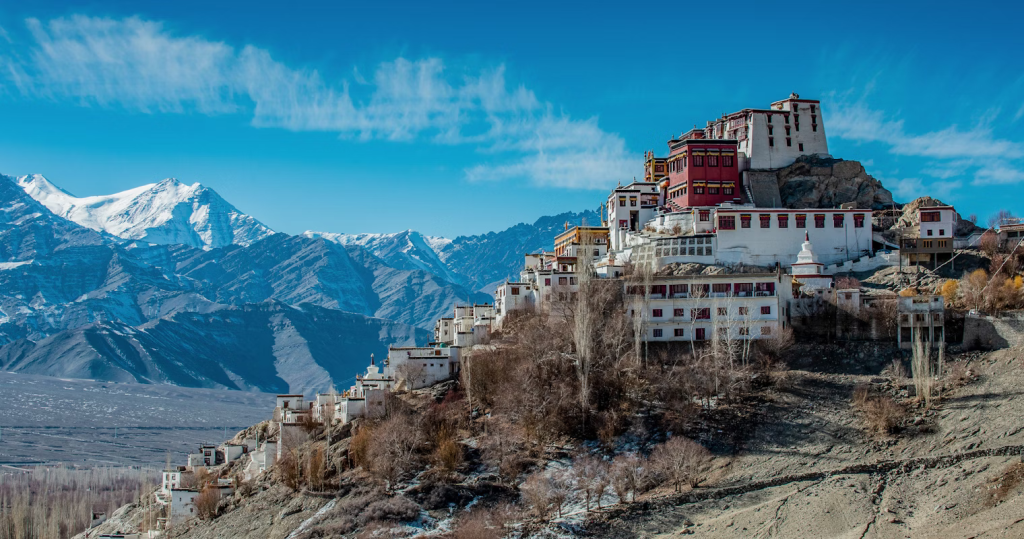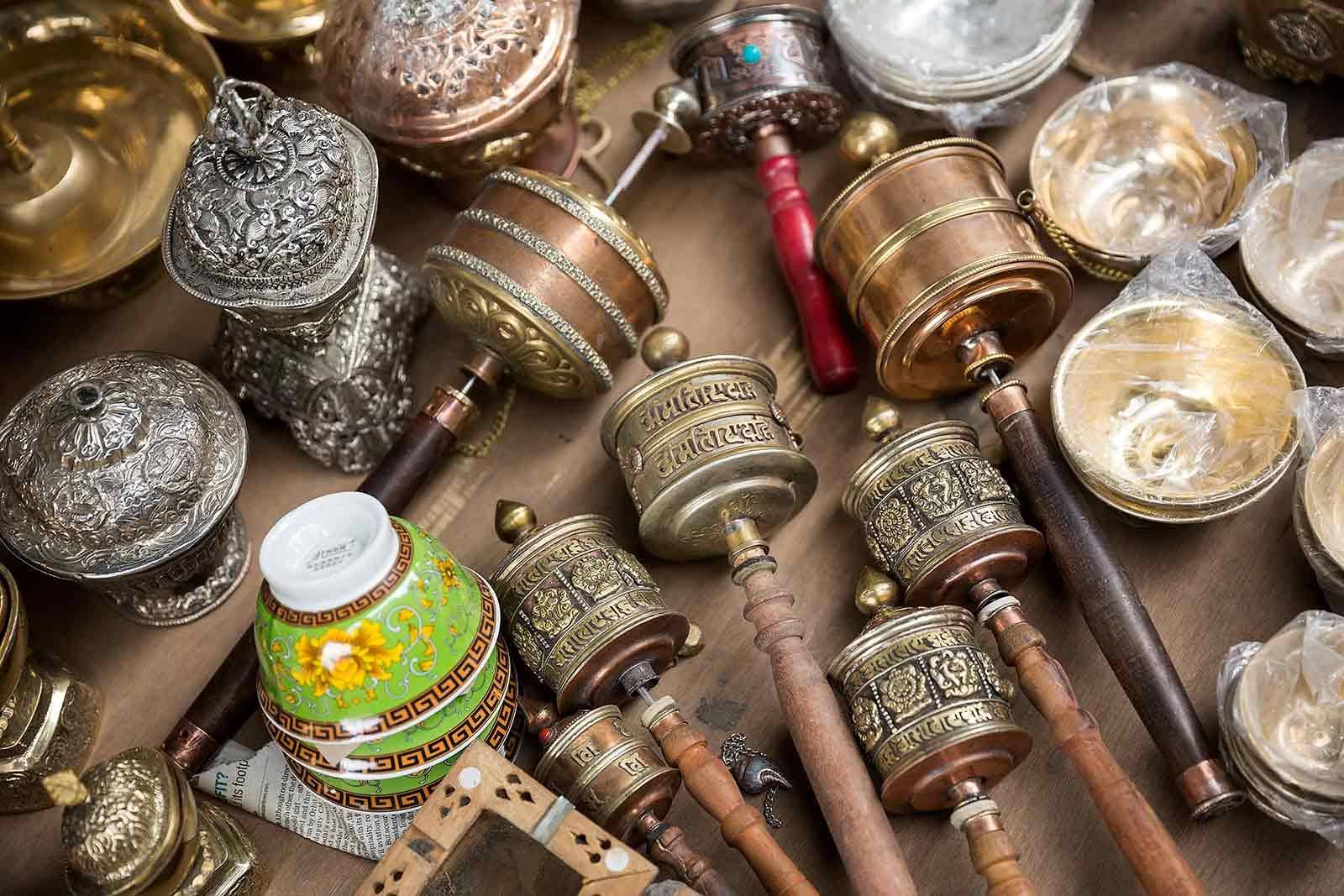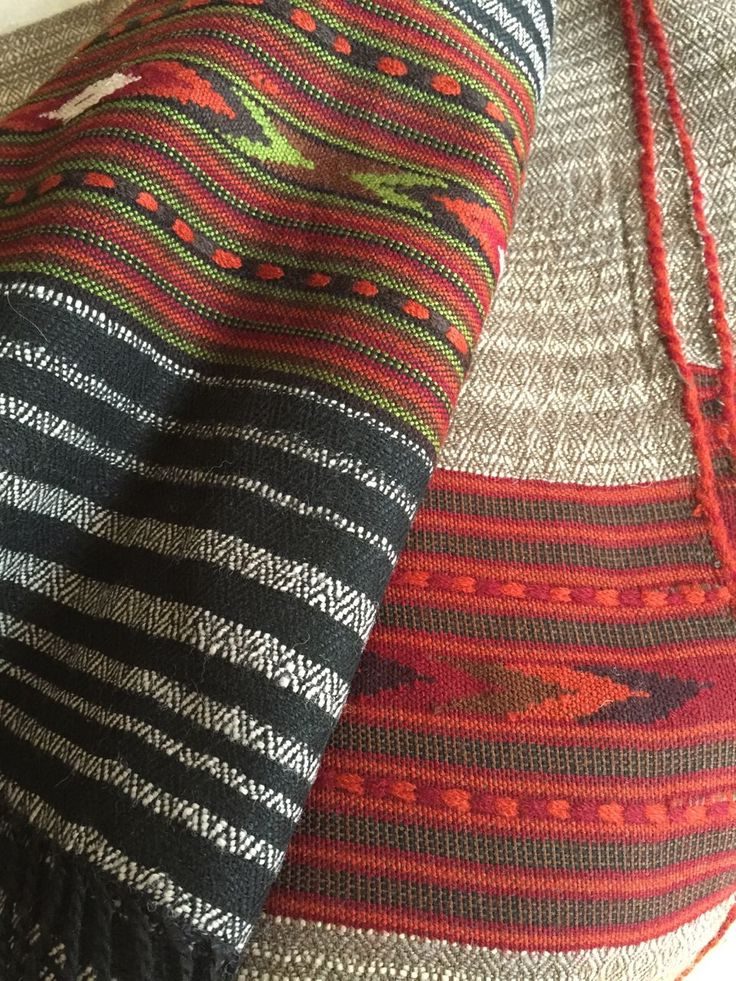
Ladakh, often called the “Land of High Passes,” is a region in the northernmost part of India, known for its breathtaking landscapes, Buddhist culture, and strategic location. It was officially made a Union Territory (UT) of India on October 31, 2019, after being separated from the erstwhile state of Jammu and Kashmir. Ladakh shares its borders with Tibet (China) to the east, Himachal Pradesh to the south, Jammu & Kashmir and Pakistan to the west, and the disputed Aksai Chin region (controlled by China) to the northeast.
Ladakh is situated at a high altitude, with much of its territory lying above 3,000 meters (9,800 feet). It is home to some of the highest motorable roads in the world, including Khardung La and Chang La. The region is known for its cold desert climate, with temperatures often dropping below -30°C in winter. The Indus River, which has historical significance in Indian civilization, flows through Ladakh, supporting life in this arid region. The Zanskar Range and the Great Himalayas form its prominent mountain ranges, making it a paradise for trekkers and adventure enthusiasts.
Historical facts about Ladakh
Ancient History (Pre-10th Century CE)
- Ladakh was part of the ancient trade routes that connected Tibet, India, and Central Asia, making it an essential center for commerce and culture.
- The early inhabitants were influenced by Indo-Aryan and Tibetan cultures, with Buddhism arriving in the region as early as the 2nd century BCE.
- It was once part of the larger Tibetan Empire, particularly during the reign of the Tibetan kings in the 7th–9th centuries CE.
Medieval Period (10th–17th Century CE)
- In the 10th century, the first independent Ladakhi dynasty was established by Nyima-Gon, a Tibetan prince. He founded a kingdom that promoted Buddhism and built early monasteries.
- The 16th and 17th centuries saw the rise of the Namgyal Dynasty, which strengthened Ladakh’s independence and built many of its famous monasteries, such as Hemis, Thiksey, and Spituk.
- During the 17th century, Ladakh faced invasions from the Mughal Empire and the Kashmiri rulers, leading to political struggles.
Colonial and Modern History (19th–21st Century)
- In 1834, Ladakh was invaded by the Dogra General Zorawar Singh, leading to its incorporation into the Dogra kingdom of Jammu and Kashmir.
- In 1947, after India’s independence and partition, Ladakh became part of Jammu and Kashmir but was contested by Pakistan.
- In 1948, 1962, 1999, Ladakh witnessed military conflicts:
- First Kashmir War (1947-48): Pakistani forces attempted to capture Ladakh.
- Sino-Indian War (1962): China took control of the Aksai Chin region.
- Kargil War (1999): Conflict between India and Pakistan in the Kargil sector.
Formation of Union Territory (2019-Present)
- On August 5, 2019, the Government of India revoked Article 370 of the Constitution, stripping Jammu and Kashmir of its special status.
- On October 31, 2019, Ladakh was separated from Jammu and Kashmir and became a Union Territory, without a legislature, directly governed by the central government.
Culture and Religion
Ladakh has a unique cultural identity, heavily influenced by Tibetan Buddhism. The majority of its population follows Tibetan Buddhist traditions, while some areas have a significant Muslim population, especially in Kargil.
Key Cultural Aspects
- Monasteries & Festivals: Famous Buddhist monasteries include Hemis, Diskit, Alchi, and Lamayuru. The Hemis Festival is one of the biggest annual celebrations.
- Languages: The primary languages spoken in Ladakh are Ladakhi (a dialect of Tibetan), Hindi, and English.
- Traditional Clothing: People wear woolen garments, including the goncha (a long robe) and the distinctive perak (a headdress worn by Ladakhi women).
- Cuisine: Ladakhi food includes thukpa (noodle soup), momos (dumplings), and butter tea (gur-gur chai), influenced by Tibetan cuisine.
Tourism and Economy
Ladakh is a top tourist destination, attracting visitors with its natural beauty and adventure opportunities.
Popular Tourist Attractions
- Pangong Lake – A high-altitude lake shared between India and China.
- Nubra Valley – Known for its sand dunes and double-humped Bactrian camels.
- Magnetic Hill – A place where vehicles appear to roll uphill.
- Leh Palace – A historic royal palace with panoramic views of Leh town.
- Tso Moriri Lake – A beautiful, less crowded high-altitude lake.
Adventure Tourism
Ladakh is famous for trekking, river rafting, and motorbike expeditions. The Manali-Leh and Srinagar-Leh highways provide some of the most scenic road trips in India.
Economic Activities
- Tourism: The primary source of income for locals.
- Agriculture: People cultivate barley, peas, and potatoes in the summer months.
- Handicrafts: Ladakhi woolen textiles and Pashmina shawls are famous.
Ladakh is a region of immense historical and cultural significance. From its early days as a trade hub to its role in modern geopolitics, Ladakh remains a place of strategic importance for India. With its mesmerizing landscapes, deep-rooted Buddhist traditions, and thrilling adventure experiences, Ladakh continues to captivate travelers and history enthusiasts alike.
INDIAINNINGS
Campaigns
- Diwali Special
- Independence Day Celebrations
- Holiday on Holi day
- New Year Specials
Help
- Order Tracking
- Terms & Conditions
- Privacy Policy
- Tutorials
- FAQ
Help
- Facebook Chat
- Whatsapp Help
- E-mail Support
- Contact



